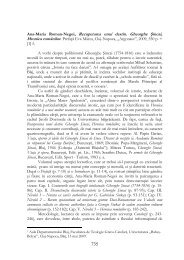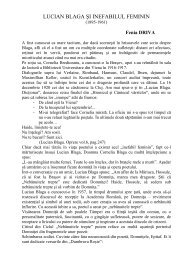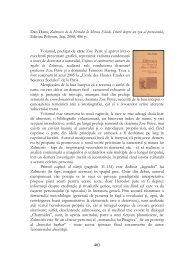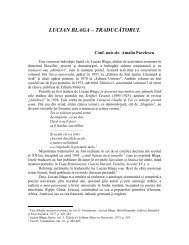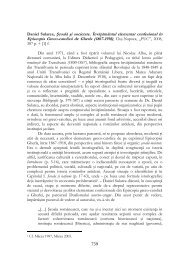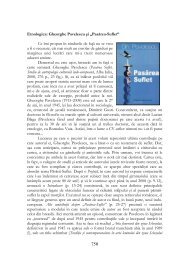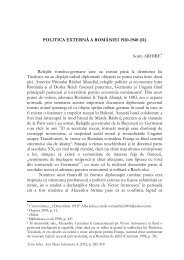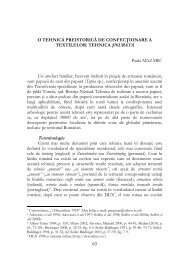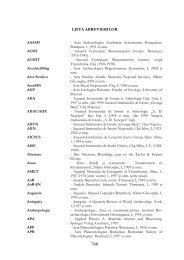MEDIEVAL ROWEL SPURS IN THE COLLECTION OF THE “IOAN ...
MEDIEVAL ROWEL SPURS IN THE COLLECTION OF THE “IOAN ...
MEDIEVAL ROWEL SPURS IN THE COLLECTION OF THE “IOAN ...
You also want an ePaper? Increase the reach of your titles
YUMPU automatically turns print PDFs into web optimized ePapers that Google loves.
Ovidiu Ghenescu<br />
know nothing of the archeological context the spurs from the Piatra Craivii<br />
fortress dated to the 13 th -14 th centuries, 14 or the ones of Tăuţi dated to the<br />
14 th century, were found. 15 Three published spurs found in enclosures I and<br />
II of Dăbâca in the level corresponding to the stone enclosure, were loosely<br />
dated to the 14 th -15 th centuries. 16 The spurs found in the fortress of Tilişca<br />
in an unknown context were dated based on typological criteria to the 14 th -<br />
15 th centuries. 17 The piece from Voivodeni was part of the inventory of a<br />
partially revealed dwelling loosely dated to the 12 th -14 th centuries. 18 The spur<br />
belonging to the same type found by chance or during fieldwalking at<br />
Cernat were dated base on analogies to the 14 th century. 19 Also following<br />
some field investigations the spur from Jigodin dated to the 14 th -15 th<br />
centuries, was discovered. 20 The spurs kept in the collection of the National<br />
Museum of Transylvanian History, one discovered at Cluj-Napoca –<br />
Franciscan Church and the other two of unknown findspot, are in a similar<br />
situation. 21<br />
Furthermore, there are a few finds that give us precious clues to the<br />
dating of this type of piece from Transylvania. Thus, one of the spurs<br />
discovered at Cecheşti was found in a waste pit along 13 th century ceramic<br />
material. 22 The piece of Chilieni belonged to a dwelling, also dated to the<br />
13 th century, having in its inventory clay pails. 23 Inside the keep found in<br />
enclosure I at Dăbâca two spurs that are very similar to the one from<br />
Săsciori, were found. The complex was built some time in the second half<br />
of the 13 th century and apparently ended its existence at the end of the 13 th<br />
century - beginning of the 14 th century. 24 Another spur of the same type was<br />
discovered in a dwelling complex at Cuhea and dated in the late 13 th century<br />
- mid-14 th century. 25<br />
Therefore, the spur found in the fortress of Săsciori can be included<br />
in the type A.a.1 in the typology proposed by Z. Györfi dating in<br />
Transylvania to the second half of the 13 th century and the first half of the<br />
14 Anghel, Berciu 1968, fig. 4.<br />
15 Ibidem, fig. 16/10-11.<br />
16 Pascu, Rusu et alii 1968, p. 168, fig. 8/1-3.<br />
17 Nagler 1967, p. 82, Abb. 2/2.<br />
18 Petică 1979, p. 131, pl. XCIII/4.<br />
19 Haszmann, Bordi 1998, p. 263-264, 2. ábra/2, 3. ábra/1-2, 4. ábra/1.<br />
20 Jánovits 1999, p. 123, pl. V/1.<br />
21 Györfi 2004, p. 102, 104; Györfi 2006, p. 116-117, 119, 121.<br />
22 Györfi 2004, p. 102.<br />
23 Székely 1990, p. 4, 10. ábra/7.<br />
24 Iambor 1984, p. 199, pl. III/1, 4.<br />
25 Popa, Zdroba 1966, p. 22, fig. 15/b.<br />
246



